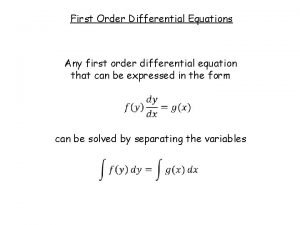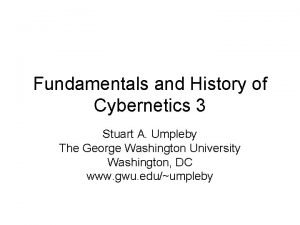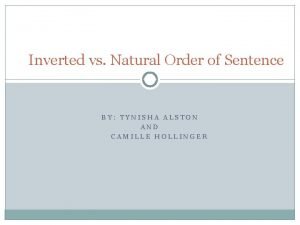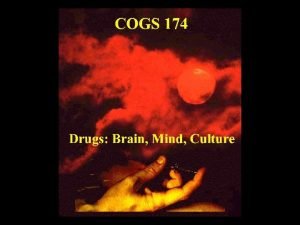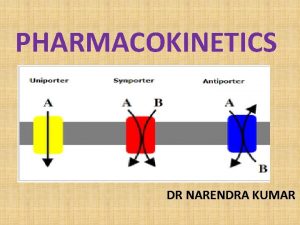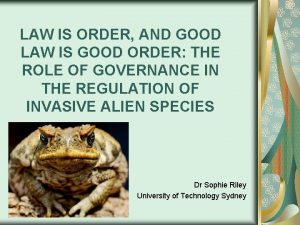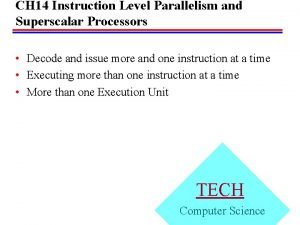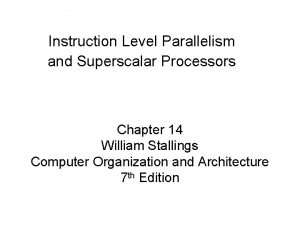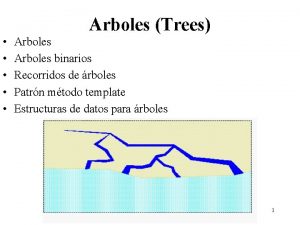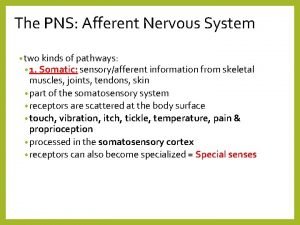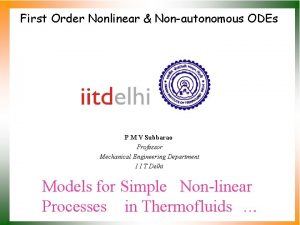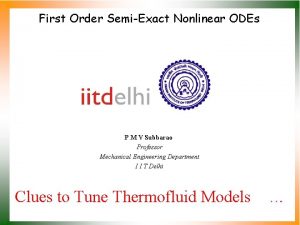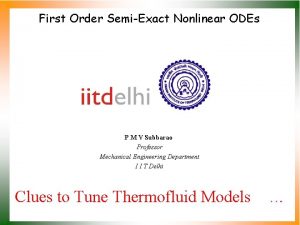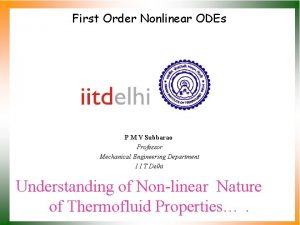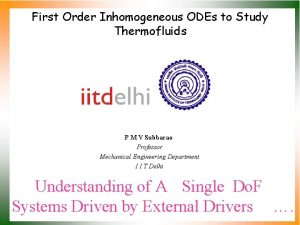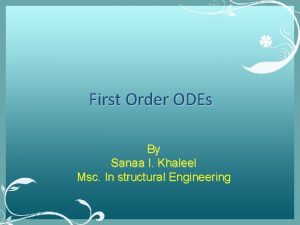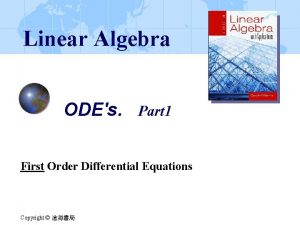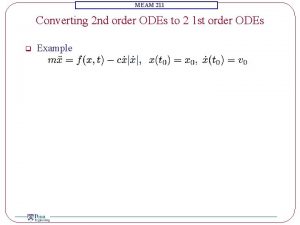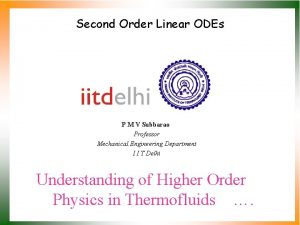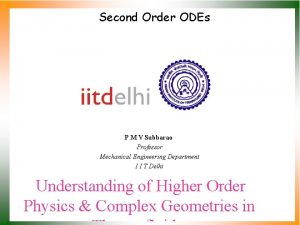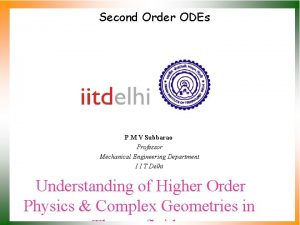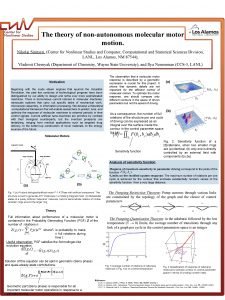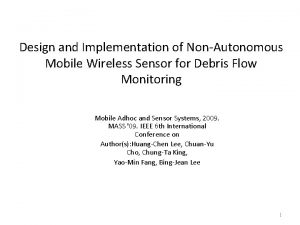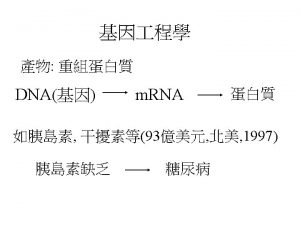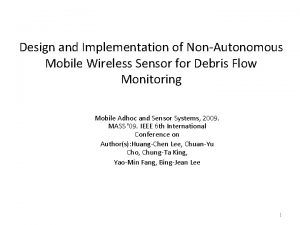First Order Nonlinear Nonautonomous ODEs P M V




















- Slides: 20

First Order Nonlinear & Non-autonomous ODEs P M V Subbarao Professor Mechanical Engineering Department I I T Delhi Models for Simple Non-linear Processes in Thermofluids ….

General First Order ODEs : Definition The first-order differential equation (on the unknown y is • where f(x, y(x)) is given or known and this called as source function. • First order linear ODE: These are always separable…. .

Torricelli’s theorem : The First Separable ODE The theorem was discovered by and named after the Italian scientist Evangelista Torricelli, in 1643. This is a separable, nonlinear differential equation for the depth y

Newton’s Study on Nonlinear Thermofluid Systems • In 1701, Newton published (in Latin and anonymously) in the Phil. Trans. of the Royal Society a short article (Scala graduum Caloris).

Autonomous Differential Equation • An autonomous differential equation is an ordinary differential equations which does not explicitly depend on the independent variable. • An autonomous, nonlinear, first-order differential equation has the following form: where

The Guess and Check method • Guess and check is a method, in which any function that satisfies the autonomous equation is found. • It doesn't matter what method is used to find the function. • The task is to prove that it is a solution. • The way to guess is to use your knowledge and intuition to find a function whose derivative behaves in the required way.

Non-autonomous and Nonlinear Equations • The general form of the non-autonomous, first-order differential equation is The equation can be a nonlinear function of both y and x. There is No general method of solution for 1 st-order NL-ODEs. However, a variety of techniques are invented for special class of NL-NA-ODE.

Central Idea for Innovation of Solutions to NL-NA-ODE • The sole idea lies in separability of an ODE. • All separable NL-ODEs are easily solved. • Innovation of solution to few non-separable NL ODEs deals with transformation of NL-NS-ODE into NL-S-ODE. • Let us discuss few such methods available in literature.

The Bernoulli Equation • In 1696 Jacob Bernoulli solved what is now known as the Bernoulli differential equation. • This is a first order nonlinear differential equation. • The following year Leibniz solved this equation by transforming it into a linear equation. • Let us learn Leibniz's idea in more detail. • The Bernoulli equation is where p, q are given functions and n . Remarks: (a) For n 0, 1 the equation is nonlinear. (b) If n = 2, it is called as logistic equation (c) This is not the Bernoulli equation from fluid dynamics.

Bernoulli Theorem • The function y is a solution of the Bernoulli equation iff the function is solution of the linear differential equation. • The Bernoulli equation for y, which is nonlinear, is transformed into a linear equation for v = 1/y(n-1). • The linear equation for v cane be solved using the integrating factor method. • The last step is to transform back to

Proof of Bernoulli’s Theorem • Divide the Bernoulli equation by yn Introduce the new unknown and compute its derivative, Substitute v and this last equation into the Bernoulli equation to get linear first order inhomogeneous ODE.

The Transformed ODE • This establishes the Theorem.

Euler Homogeneous Equations • This is another special nonlinear differential equation and it is not separable, but it can be transformed into a separable equation changing the unknown function. • This is the case for differential equations known as Euler homogenous equations. • An Euler homogeneous differential equation has the form Another form of Euler homogeneous equations is Where the functions N, M, of x; y, are homogeneous of the same degree.

Solving Euler Homogeneous Equations • The original homogeneous equation for the function y is transformed into a separable equation for the unknown function v = y/x. • First the Euler equations is solved for v, in implicit or explicit form, and then transforms back to y = x v. Next step is to replace dy/dx in terms of v. This is done as follows These expressions are introduced into the differential equation for y.

Separable ODE

Exact Differential Equations • A differential equation is exact when a total derivative of a function, called potential function is zero. • Exact equations are simple to integrate. • Any potential function must be equal to a constant is an implicit solution of an Exact ODE. • This solution define level surfaces of a potential function. • An integrating factor converts few non-exact equations into an exact equation. • These are called as semi-exact differential equations

Origin of Exact Equation • The idea behind exact equations is actually quite simple. • Consider a function, ψ(y(x), x). • As usual, x is the independent variable and y is the dependent variable. • A set of functions, ψ; namely, ψ(y(x), x) = c exist in thermofluids. • Differentiating ψ with respect to x gives Note that this is of the form where f and g are functions of both the independent variable, x, and the dependent variable y.

Properties of Exact Equation • A differential equation is exact if certain parts of the differential equation have matching partial derivative. • An exact differential equation for y is where the functions f and g satisfy • The general solution is simply a matter of determining ψ and setting ψ(y, x) = c. • The correct value of c will be determined from the initial condition in the case of the initial value problem.

Theorem of Exact Equation : NL-NS-FO-ODE • For a Nonlinear ordinary, first order differential equation if then there exists a function ψ(y(x), x) such that The general solution is given implicitly by

Practical Problems to Solve Exact Nonlinear FO-ODE • • • The theory is nice and tidy. However, there are two practical problems. First, the solution is only given implicitly by ψ. Second, a method is to be formulated to determine ψ. The first problem is inherent in the method and is unavoidable.
 Integrating factor of differential equation
Integrating factor of differential equation 1st order 2nd order 3rd order neurons
1st order 2nd order 3rd order neurons Ballade rhyme scheme example
Ballade rhyme scheme example Modern ode
Modern ode Odės pavyzdžiai
Odės pavyzdžiai What is it that creon claims all prophets love?
What is it that creon claims all prophets love? Elegy and ode
Elegy and ode Haiku scheme
Haiku scheme John keats 1819 odes
John keats 1819 odes First order change
First order change First order cybernetics and second order cybernetics
First order cybernetics and second order cybernetics What is inverted order
What is inverted order Order taker vs order getter
Order taker vs order getter Difference between 1st order and zero order kinetics
Difference between 1st order and zero order kinetics First order drug elimination
First order drug elimination Law is order and good law is good order
Law is order and good law is good order Order/properties-order
Order/properties-order In order issue in order completion example
In order issue in order completion example In order issue in order completion example
In order issue in order completion example Arbol in order post order
Arbol in order post order Cutaneous mechanoreceptors
Cutaneous mechanoreceptors
